Did you know that the Microsorum musifolium, commonly known as the Crocodile Fern, can be a stunning addition to your indoor plant collection? With its unique appearance and low maintenance nature, this decorative plant is perfect for any houseplant enthusiast in the UK. In this article, I will provide you with essential tips and tricks on how to care for the Microsorum musifolium, ensuring that it thrives in your home. Whether you’re a seasoned plant enthusiast or a beginner, get ready to discover the secrets of nurturing this beautiful indoor plant.
Appearance of Microsorum musifolium (Crocodile Fern)
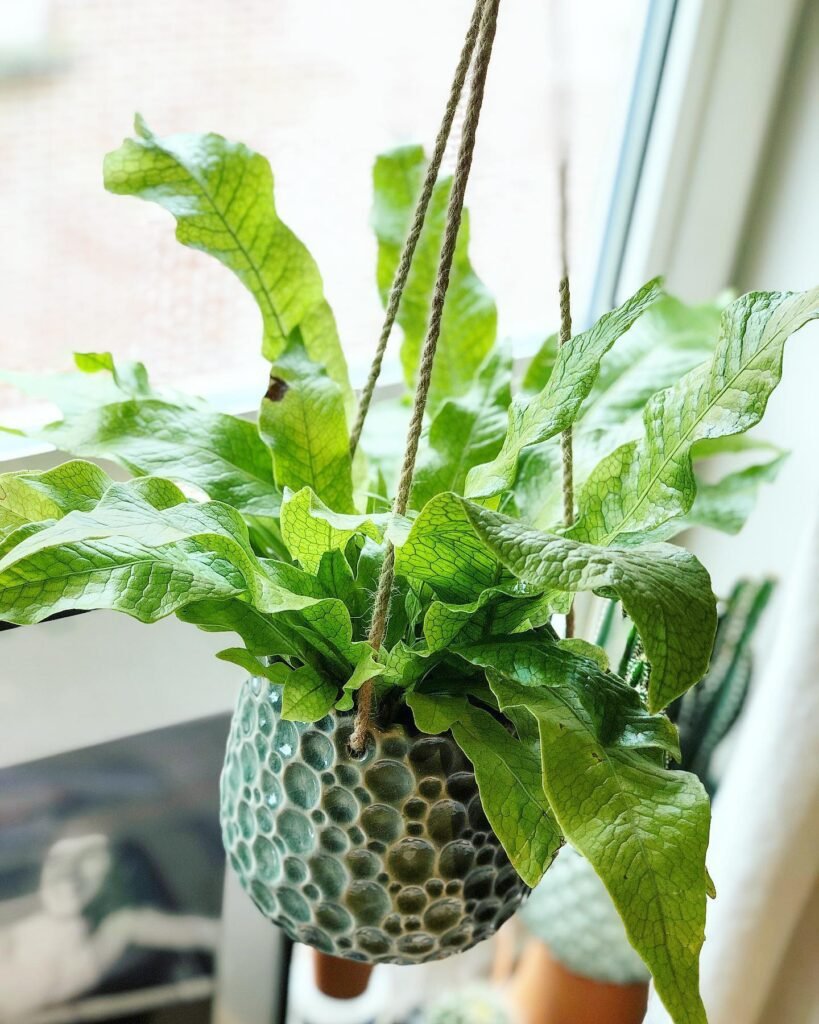
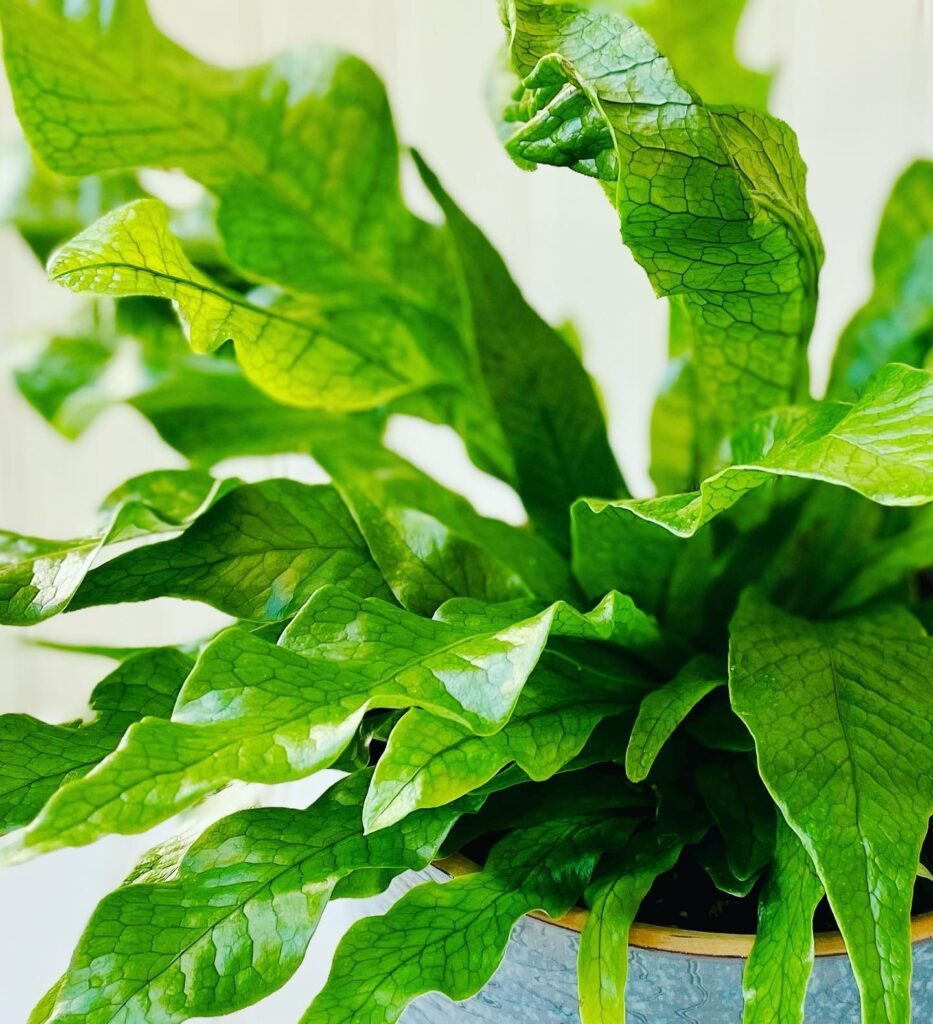
The Microsorum musifolium, or Crocodile Fern, is a stunning fern plant that will add a touch of natural beauty to any indoor space. Native to warm, tropical rainforests in Australia, this plant features long, strap-like leaves that bear a striking resemblance to crocodile skin.
The unique texture and suave crocodile skin pattern on the leaves make the Crocodile Fern an eye-catching and decorative plant that is sure to be a conversation starter. Whether placed on a shelf, a desk, or as part of a larger display, this fern will bring a touch of lushness and elegance to your home or office.
With its distinctive appearance and low-maintenance nature, the Crocodile Fern makes for an excellent choice for plant enthusiasts of all skill levels. Whether you’re a seasoned plant parent or a beginner looking to embark on a new botanical journey, this fern is sure to captivate your attention and become a beloved addition to your indoor plant collection.
 the Crocodile Fern thrives without soil in its natural habitat? This remarkable fern absorbs nutrients from the air and rainwater, growing on trees or rocks. Its crocodile-skin-like leaves efficiently capture moisture, making it a striking and resilient addition to any indoor space.
the Crocodile Fern thrives without soil in its natural habitat? This remarkable fern absorbs nutrients from the air and rainwater, growing on trees or rocks. Its crocodile-skin-like leaves efficiently capture moisture, making it a striking and resilient addition to any indoor space.
Light Requirements for Crocodile Fern
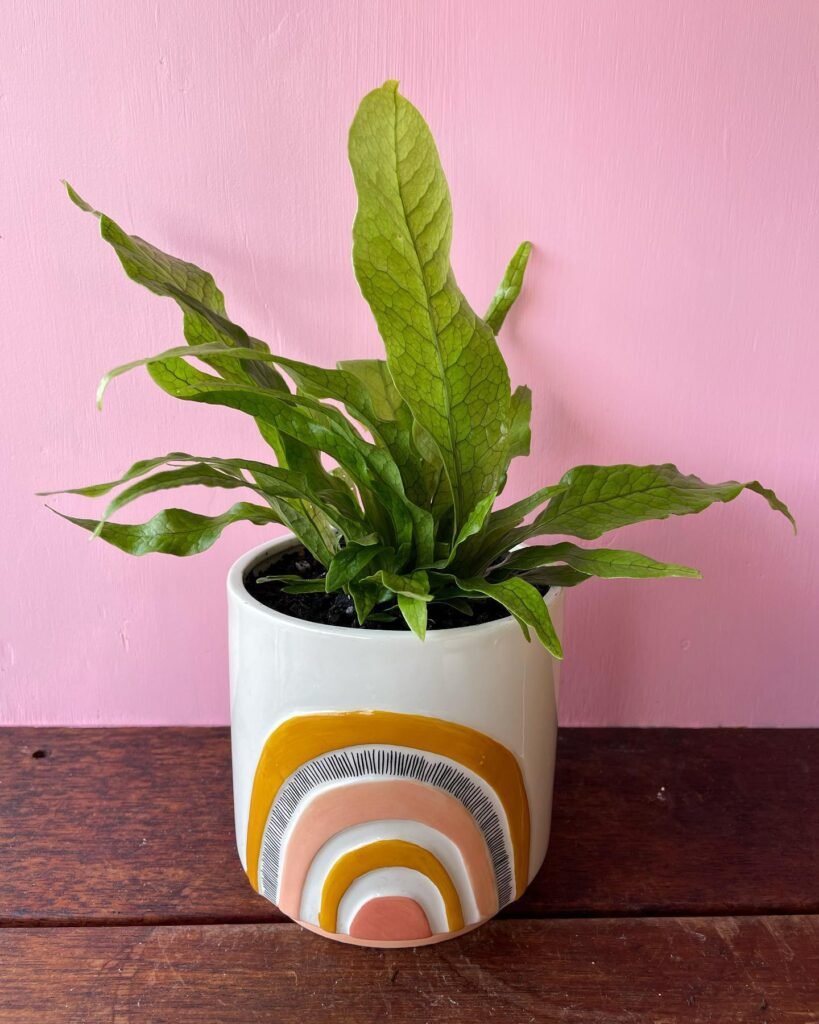

Crocodile Ferns, also known as Microsorum musifolium, are beautiful indoor plants that thrive in bright, indirect light. To ensure the best growth and health for your Crocodile Fern, it’s essential to meet its light requirements.
Direct sunlight can be harmful to the fern’s delicate leaves, causing them to scorch. Therefore, it’s crucial to place your Crocodile Fern near a north or east-facing window where it can receive filtered light throughout the day. This will provide the perfect balance of brightness without exposing the plant to direct sun rays.
The filtered light will create a gentle, diffused glow that mimics the natural light found in the fern’s native rainforest habitat. By doing so, you’ll ensure that your Crocodile Fern receives the adequate light it needs for photosynthesis and growth, without risking any damage to its foliage.
While Crocodile Ferns can tolerate lower light levels, it’s important to note that their growth may be slower under such conditions. To maintain a healthy rate of growth, it’s best to provide them with the ideal lighting conditions mentioned above.

Watering Tips for Crocodile Fern

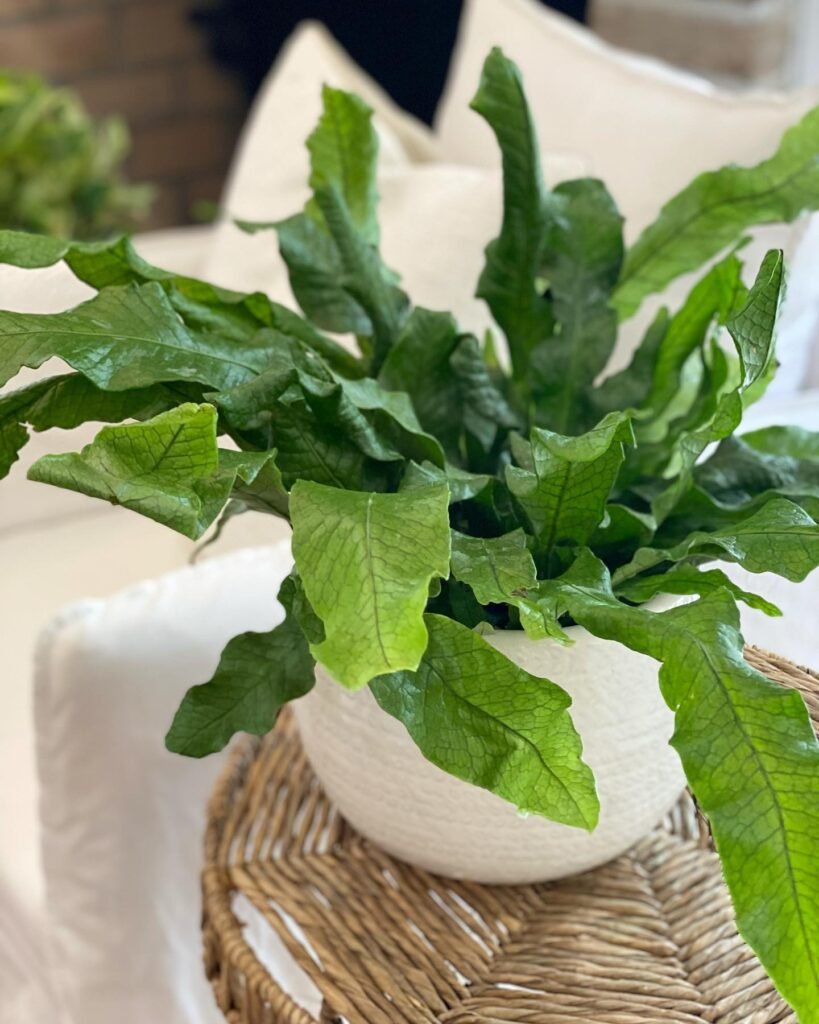
In order to keep your Crocodile Fern thriving and healthy, it is crucial to provide it with the right amount of water. Here are some watering tips to ensure optimal growth for your indoor Crocodile Fern:
- Keep the soil evenly moist: It is important to maintain consistent moisture levels in the soil of your Crocodile Fern. Avoid letting the soil become completely dry or waterlogged. The goal is to keep the soil evenly moist but not soggy.
- Monitor the top inch of soil: Before watering, check the top inch of the soil with your finger. If it feels slightly dry, it’s time to water your fern. However, if it still feels moist, hold off on watering and check again in a day or two.
- Avoid overwatering: Overwatering can lead to root rot, which is detrimental to the health of your Crocodile Fern. Make sure the pot has proper drainage to allow excess water to escape and prevent waterlogging.
- Prevent underwatering: On the other hand, underwatering can cause the leaves of your Crocodile Fern to dry out and wilt. Be attentive and water your fern regularly to prevent dehydration.
- Consider the growing season: During the active growing season, which generally occurs in the spring and summer, the Crocodile Fern will require more frequent watering. As the growth slows down in the winter months, water it less frequently to avoid overhydration.

Fertilizing and Soil for Crocodile Fern
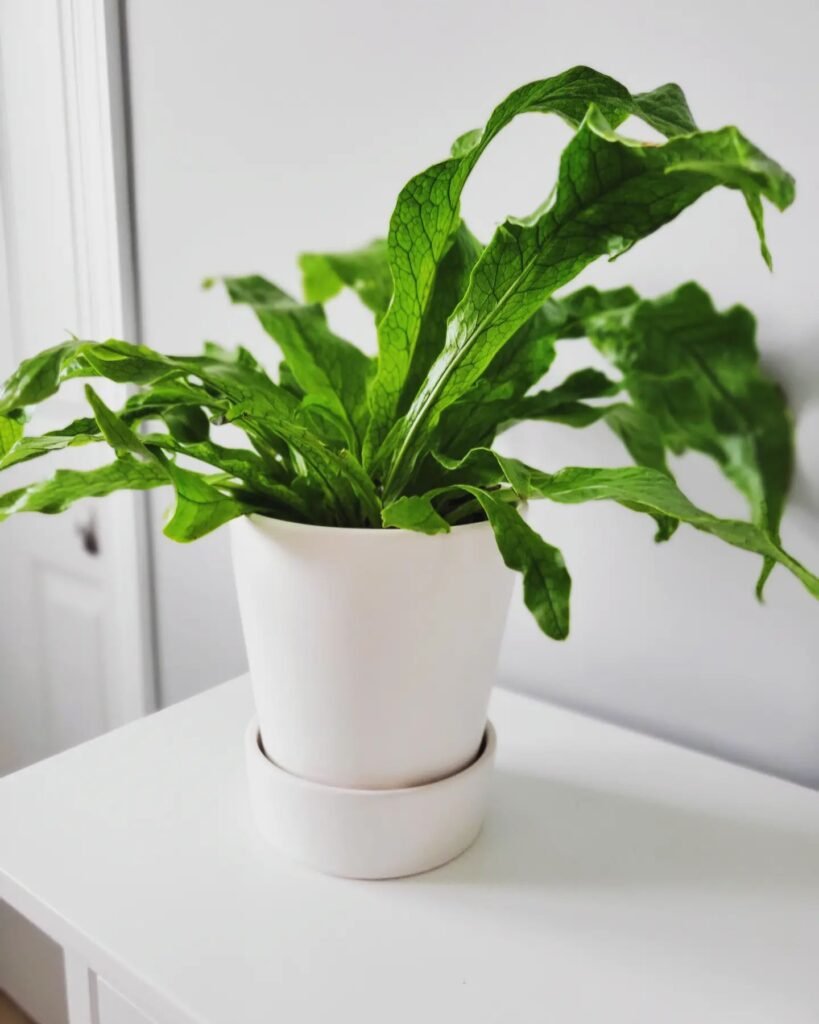
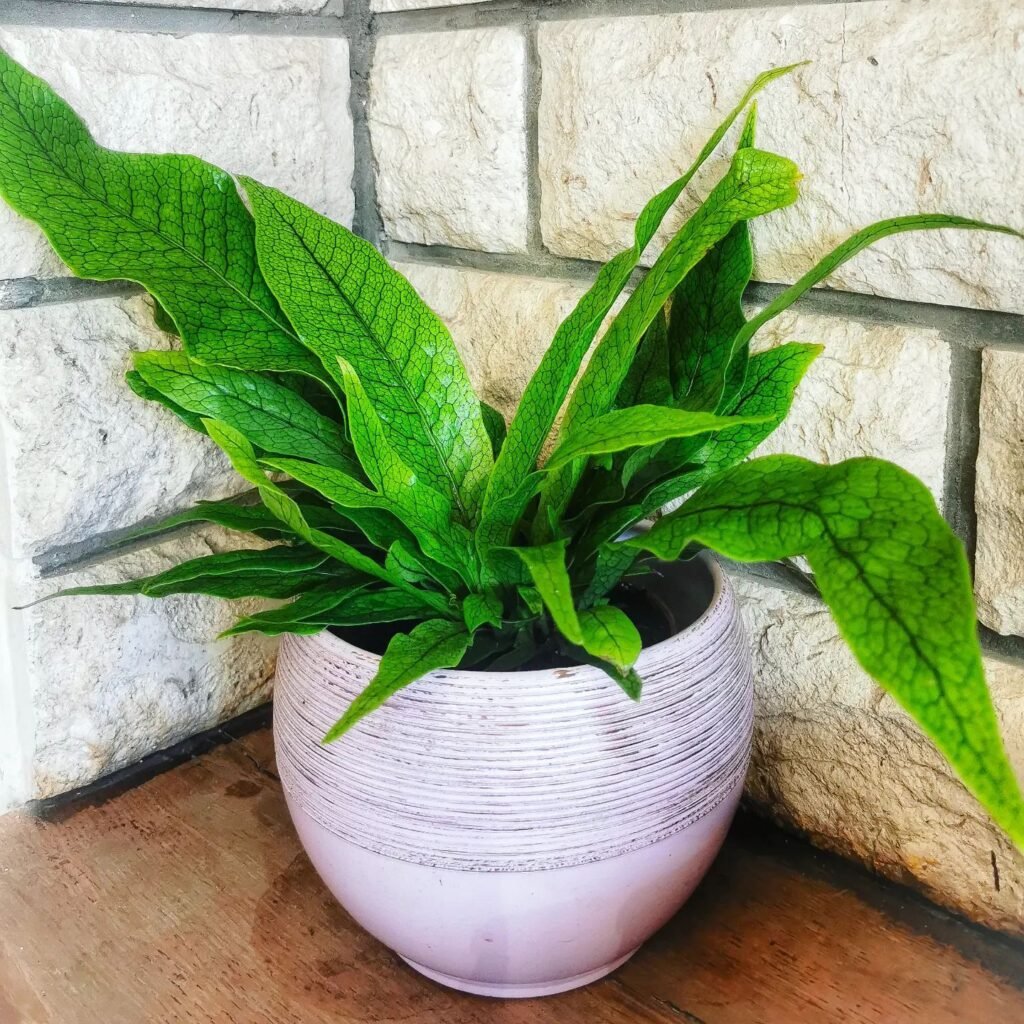
Proper fertilizing and soil conditions are essential for the healthy growth of your Crocodile Fern, an exquisite indoor plant that adds beauty to any houseplant collection. Fertilization should be done regularly during the growing season, which typically occurs in spring and summer. Using a balanced houseplant fertilizer will provide the necessary nutrients to support lush foliage and vibrant growth.
When it comes to fertilizing your Crocodile Fern, it’s important to avoid feeding it during the winter months. The plant enters a dormant phase during this time, and excessive fertilization can harm its delicate root system. Instead, focus on nourishing the fern during its active growth period to ensure optimal development.
Choosing the right soil for your Crocodile Fern is equally crucial. Opt for a well-draining potting mix that allows excess water to flow through, preventing waterlogging that could lead to root rot or other detrimental conditions. A combination of peat moss, perlite, and vermiculite can create an ideal blend that promotes healthy root growth and prevents moisture-related issues.
- Fertilize your Crocodile Fern with a balanced houseplant fertilizer during the spring and summer.
- Avoid feeding the fern during the winter months when it is in its dormant phase.
- Choose a well-draining potting mix to prevent waterlogging and promote optimal root health.
- Consider using a blend of peat moss, perlite, and vermiculite to create a soil mix that retains moisture while allowing excess water to drain.

Pruning and Maintenance for Crocodile Fern
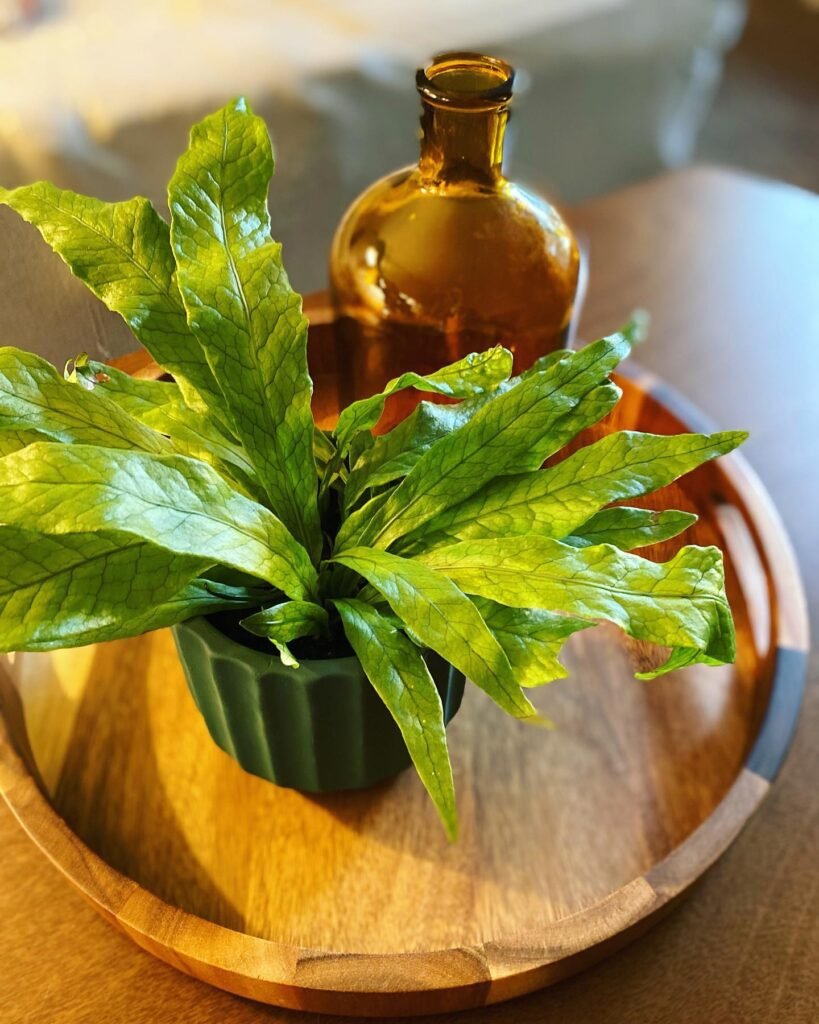
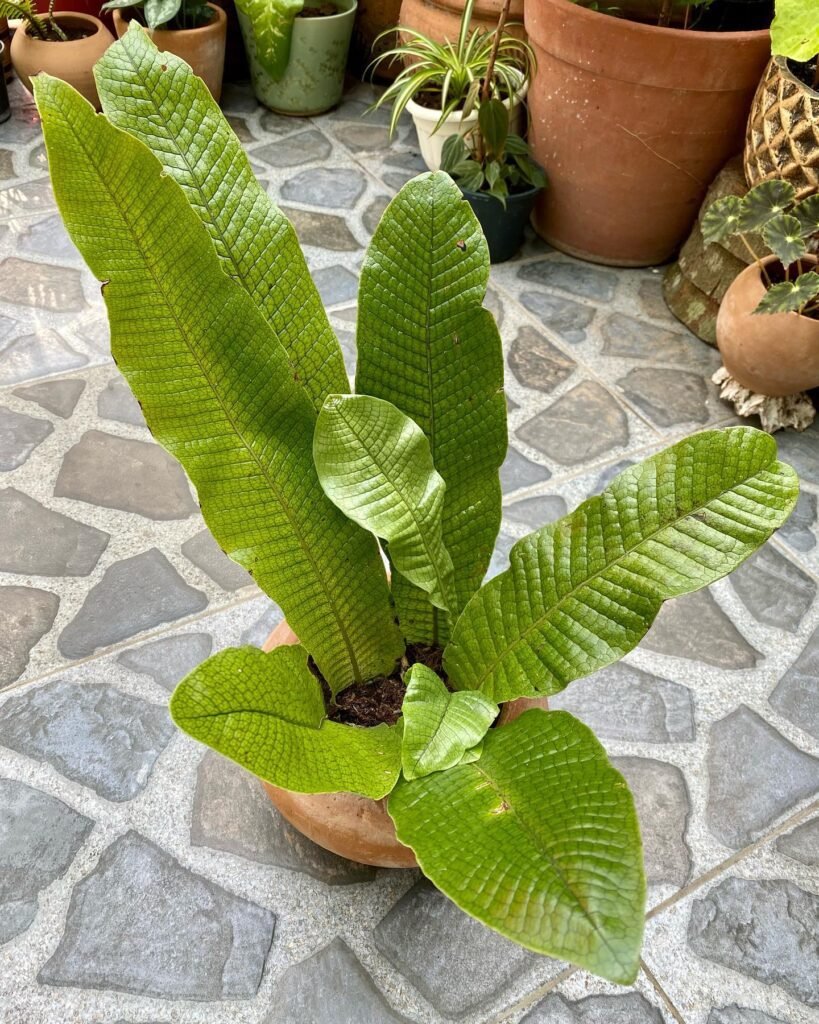
When it comes to maintaining your Crocodile Fern, regular pruning is not necessary, but a little care can go a long way in keeping it looking its best. Here are some tips for pruning and general maintenance to keep your indoor plant thriving:
- Remove yellow or dead leaves: While Crocodile Ferns are generally low-maintenance, it’s a good idea to periodically check for any yellow or dying leaves. Simply use clean, sharp scissors or pruning shears to snip them off at the base. This helps keep the plant’s overall appearance tidy and promotes healthy growth.
- Rotate the fern occasionally: Crocodile Ferns tend to grow towards the light source, causing them to lean or become lopsided over time. To ensure even growth, give your fern a quarter turn every few weeks. This allows all sides of the plant to receive adequate light, promoting a fuller and more symmetrical appearance.
- Monitor for pests and diseases: Like any houseplant, Crocodile Ferns can be susceptible to pests such as mealybugs or scale insects. Regularly inspect the plant for any signs of infestation, such as tiny insects, sticky residue, or unusual leaf discoloration. If you spot any issues, take prompt measures to address the problem, such as using organic pest control methods or seeking advice from a plant specialist.
Tip: Maintaining a clean and pest-free environment around your Crocodile Fern can help prevent infestations and ensure its long-term health.

Propagating Microsorum musifolium (Crocodile Fern)


If you’re looking to expand your collection of indoor plants, propagating Microsorum musifolium, known as Crocodile Fern, is a great way to do it. Propagation can be easily achieved through division, allowing you to create new plants from the existing one.
To propagate Crocodile Ferns, gently separate the offshoots or rhizomes from the main plant. Carefully untangle the roots and ensure each division has its own set of leaves and root system. This will give them the best chance of establishing themselves as individual plants.
Once you have divided the offshoots, plant them in separate containers with well-draining soil. A mix of peat moss and perlite works well for this purpose. Make sure the containers have drainage holes to prevent waterlogging.
When it comes to care, maintain proper watering and light conditions to encourage the growth of the new plants. Keep the soil evenly moist, allowing the top inch to dry out slightly before watering again. Place the newly propagated ferns in an area that receives bright, indirect light, avoiding direct sunlight.
As the new plants establish their root systems and grow, you can gradually increase their exposure to light and adjust watering accordingly. Monitor their progress and provide appropriate care to help them thrive.

Repotting Tips for Crocodile Fern
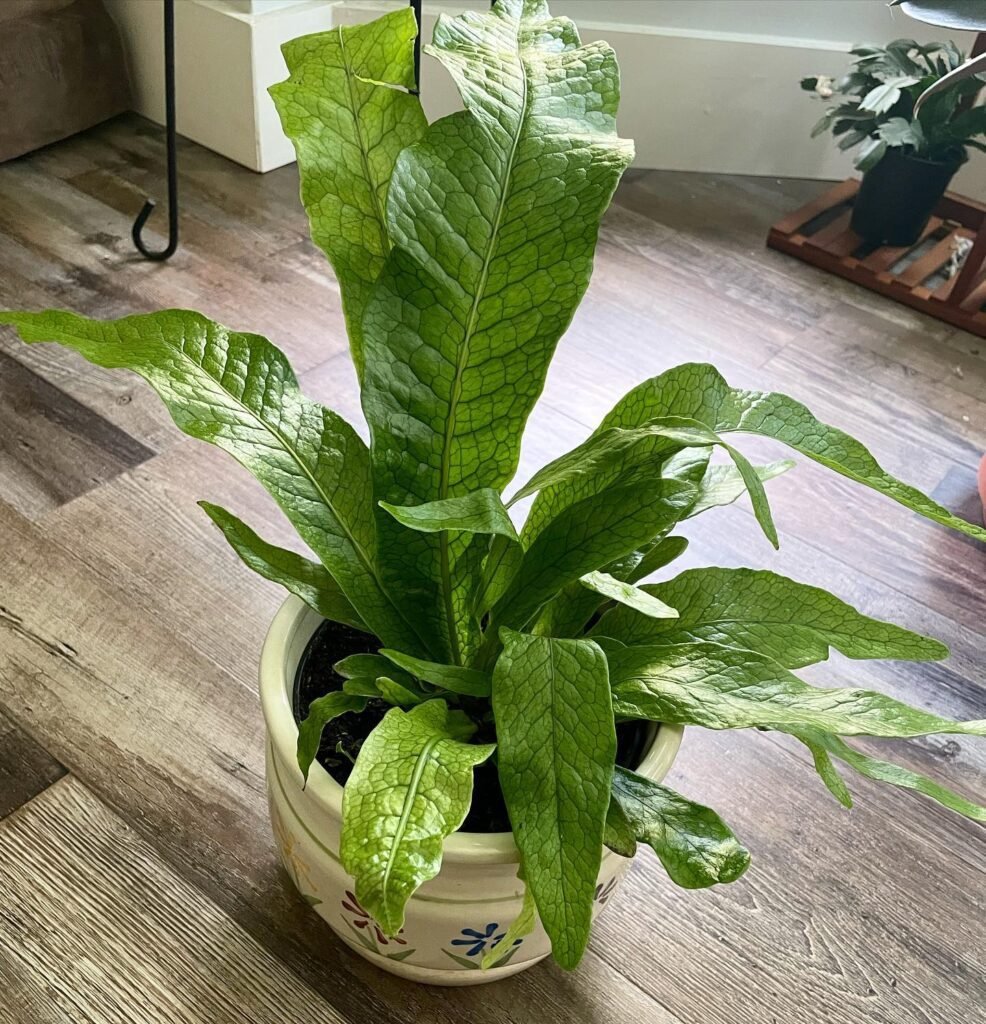

Crocodile Ferns, with their shallow root system, generally do not require frequent repotting. However, there are instances where repotting becomes necessary, such as when the plant becomes root-bound or outgrows its current pot. Here are some repotting tips to help you ensure the continued health and growth of your Crocodile Fern:
- Choose the right time: Repot your Crocodile Fern in the spring when it is in its active growing phase. This allows the plant to recover quickly and adjust to its new environment.
- Choose the right pot: Select a slightly larger pot with drainage holes to ensure adequate water drainage. A pot that is too big may retain excess moisture, leading to root rot.
- Prepare the soil: Use well-draining potting soil that allows water to flow freely. Avoid heavy or compacted soil, as it can suffocate the roots.
- Remove the plant from its pot: Gently tap the pot to loosen the root ball. Carefully remove the plant, taking care not to damage the fragile roots.
- Inspect the roots: Take this opportunity to check the health of the roots. If you notice any rotting or damaged roots, trim them with clean, sharp scissors.
- Repot the fern: Place a layer of fresh potting soil in the new pot. Position the Crocodile Fern in the center and fill in the gaps with additional soil, ensuring that the roots are covered but not excessively buried.
- Water thoroughly: After repotting, give your Crocodile Fern a good watering to settle the soil and hydrate the roots. Avoid overwatering, as this can lead to soggy soil and root rot.
Remember to monitor your repotted Crocodile Fern closely in the following weeks, ensuring it receives proper light and moisture. With these repotting tips, you can provide your Crocodile Fern with the ideal growing conditions and promote its continued vitality as a stunning indoor houseplant.
 Did you know the Microsorum musifolium (Crocodile Fern) excels in low-light conditions? Its leaf pattern, resembling crocodile skin, efficiently captures light, allowing it to thrive where other plants might falter. It’s like a piece of the forest’s magic in your home, flourishing effortlessly.
Did you know the Microsorum musifolium (Crocodile Fern) excels in low-light conditions? Its leaf pattern, resembling crocodile skin, efficiently captures light, allowing it to thrive where other plants might falter. It’s like a piece of the forest’s magic in your home, flourishing effortlessly.
Crocodile Fern and Pet Safety
If you’re a pet owner or have small children, you may be concerned about the safety of having indoor plants in your home. The good news is that Crocodile Ferns are non-toxic to cats, dogs, and humans. This means that you can enjoy the beauty of these ferns without worrying about any harmful effects on your furry friends or little ones.
While Crocodile Ferns are considered pet safe, it’s always a good practice to discourage pets or children from ingesting any plants. Although these ferns are not toxic, consuming large amounts may still cause mild digestive discomfort. So, it’s best to keep an eye on your curious pets or adventurous toddlers and ensure they don’t nibble on the plants.
Crocodile Fern in Terrariums
The Crocodile Fern, a popular indoor plant, thrives remarkably well in terrariums. This is primarily due to its preference for high humidity and lower light conditions, making it an ideal candidate for terrarium environments.
When placed in a terrarium, the Crocodile Fern creates a stunning and self-contained ecosystem that closely mimics its natural habitat. The enclosed environment not only provides the ideal moisture levels but also traps the humidity, creating a tropical haven for the fern to flourish.
To ensure the successful growth of a Crocodile Fern in a terrarium, it is important to maintain proper watering and humidity levels. Here are some key tips:
- Watering: Ensure that the soil in the terrarium is kept evenly moist. Avoid overwatering, as it can lead to root rot. A good practice is to water the fern when the top inch of soil feels slightly dry.
- Humidity: Terrariums naturally provide a humid environment, which is favorable for the Crocodile Fern. However, it is essential to monitor the humidity levels, especially in drier climates or heated indoor spaces. Consider misting the terrarium occasionally or placing a tray of water nearby to maintain adequate humidity.
- Light: While the Crocodile Fern prefers lower light conditions, it still requires some indirect light to thrive. Place the terrarium in a location where it can receive filtered or indirect sunlight, such as near a north or east-facing window.
Helplul Videos about Growing Your Crocodile Fern
In this specially chosen collection, I’ve put together a series of videos found on the internet, to give you clear and straightforward guidance on looking after your Microsorum musifolium, commonly known as the Crocodile Fern. These videos have been designed to walk you through the basic steps of caring for your plant, ensuring it thrives and maintains its lush appearance. Tailored with beginners in mind, the content is made to be easily understandable, allowing anyone new to gardening to quickly pick up the key practices needed to keep their Crocodile Fern in top shape. You’ll be able to access these visual tutorials online, offering a flexible way to learn at your leisure.
- Microsorum Musifolium Crocodyllus (Crocodile Fern) Care Tips and Propagation
FAQ about Growing Microsorum musifolium (Crocodile Fern)

Want to know how to care for your Microsorum musifolium? Check out my easy FAQ for tips on keeping your Crocodile Fern healthy. From light to water and everything in between, get your fern looking its best.
Place your Crocodile Fern in a spot where it can receive bright, indirect light. Avoid direct sunlight, as it can scorch the leaves. A room with east or north-facing windows is ideal.
Water your fern when the top inch of the soil feels dry to the touch. Crocodile Ferns prefer consistently moist soil, but be careful not to overwater, as this can lead to root rot.
Yes, Crocodile Ferns thrive in well-draining, rich, organic potting soil. A mix designed for ferns or a blend of peat, compost, and perlite works well.
If the leaves start to yellow or develop brown, crispy edges, it might be getting too much direct sunlight. Move it to a shadier spot.
Crocodile Ferns can be placed outdoors during the warmer months in a shaded, sheltered area. However, they must be brought indoors before temperatures drop in the autumn.
Crocodile Ferns prefer temperatures between 16°C and 24°C. They do not tolerate cold well, so keep them away from draughty windows in the winter.
Place a humidifier nearby, set the plant on a pebble tray filled with water, or mist the leaves regularly to increase humidity.
Yes, feed your Crocodile Fern with a half-strength liquid houseplant fertiliser once a month during the growing season (spring and summer).
Repot in spring every 2-3 years, or when it outgrows its pot. Choose a pot one size larger than the current one and use fresh, suitable soil mix.
Yellowing leaves can be a sign of overwatering, poor drainage, or insufficient nutrients. Check the soil moisture and consider repotting if necessary.
Yes, Crocodile Ferns can be propagated by dividing the root ball during repotting. Ensure each division has several fronds and roots attached.
Inspect regularly for signs of pests like spider mites or mealybugs. Treat infestations with insecticidal soap or neem oil, ensuring to follow the product instructions.
Gently wipe the leaves with a damp cloth to remove dust. Avoid using leaf shine products, as they can clog the pores of the leaves.
Slow growth can be due to low light, low humidity, or the need for fertilisation. Ensure your plant’s care requirements are adequately met.
Crocodile Ferns are non-toxic to cats and dogs, making them a pet-friendly plant choice.
Regularly prune any dead or damaged fronds from the base to encourage bushier growth and maintain a neat appearance.
Leaf drop can occur due to stress from overwatering, under-watering, or drastic changes in temperature or light. Evaluate your care routine and adjust as needed.
Yes, Crocodile Ferns thrive in the high humidity typically found in bathrooms, as long as there is sufficient light.
I hope this serves as your starting point for mastering how to look after your Microsorum musifolium. Should you have any further queries, don’t hesitate to drop them in the comments – I’m here to assist. Bear in mind, every gardener begins at the very basics, and there’s an entire captivating world of knowledge to explore about your Crocodile Fern.
Conclusion
Caring for the Crocodile Fern, also known as Microsorum musifolium, is a rewarding experience that can add beauty and vibrancy to your indoor oasis in the UK. By providing the right light conditions and proper watering, you can help this stunning houseplant thrive. Remember to maintain a warm and humid environment, as the Crocodile Fern prefers these conditions.
Keep a close eye on the growth of your Crocodile Fern and prune it when necessary to maintain its overall appearance. Propagating the fern through division is a great way to expand your collection and enjoy more of its lushness. With these care tips, your indoor space will be transformed by the unique charm of the Crocodile Fern.
So, whether you’re an experienced plant enthusiast or just starting your indoor gardening journey, consider adding the Crocodile Fern to your collection. Its striking foliage and low maintenance nature make it an excellent choice for any indoor plant lover. Bring home the beauty of the Crocodile Fern and enjoy its presence in your space!

